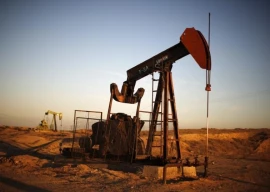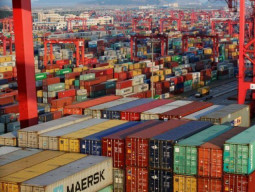
This time the unrest is not due to the death of a civilian but that of most-wanted commander of Hizbul Mujahideen. The killing of Kashmir militancy’s poster boy Burhan Wani has left a trail of death and destruction, perhaps not anticipated by Peoples Democratic Party (PDP) and Bhartiya Janta Party (BJP) coalition government headed by Mehbooba Mufti, once known for her soft separatism. The situation in Indian Kashmir is grim and the death of 32 people – 30 of whom were killed by the police and paramilitary Central Reserve Police Force (CRPF) – has numbed the place. The fear of some analysts, including former Jammu and Kashmir Chief Minister Omar Abdullah, that a dead Wani may prove to be more dangerous than a living one have started coming true.
Kashmir unrest sparks Pak-India diplomatic spat
In the last 26 years of conflict that began with the armed rebellion against the Indian state, it is for the first time that deaths are taking place because people demonstrated anger against the killing of a militant commander. In the recent past Kashmir has seen uprisings in 2008 and 2010, which have been equated with the Arab Spring and the Intifada. In 2008, the trigger was Amarnath land row, when the then Governor SK Sinha got a huge chunk of forest land allotted to Shri Amarnath Shrine Board (SASB), which evoked a feeling of insecurity among Kashmiris who had already been fighting against progressive political disempowerment. The land row not only led to scores of deaths but deeply divided the two regions Kashmir and Jammu on communal lines. People’s record participation in assembly elections that followed in December 2008 also brought another layer of reality to the fore, but that did not completely wash off the strong anti-India sentiment on the ground.
Only after two years, people have risen up in anger again. A protest against the killing of three civilians in a fake encounter by the army in remote Machil area in Kupwara district sparked protests and with the killing of a young student Tufail Mattu on June 11, 2010, Kashmir was again in flames. With Omar Abdullah in command, public unrest that took the shape of a strong anti-India movement left 130 dead. The wounds were deep and it took many months to restore order. But the sentiment did not fritter away. Omar did rule for the next four years but he had lost real power. Again in 2014, people returned to polling booths to elect a new government. As the mandate was deeply fractured and sealed the communal divide between the two regions, a new combination, termed “meeting of North and South Pole” by the former Chief Minister Mufti Muhammad Sayeed, was formed with PDP and BJP joining hands. Kashmir had surely not voted for BJP to come into power but PDP allying with a party seen as anti-Muslim and anti-Kashmir further contributed to the frustration of an average Kashmiri.
Pakistan conveys ‘serious concerns’ over Kashmir killings to Indian high commissioner
At the time PDP-BJP came to power a sense of disenchantment had taken root in society. Hanging of Afzal Guru, a convict in the 2001 parliament attack case, had sent a strong signal to Kashmiris that New Delhi could do anything without caring for their emotions. Guru had low risk of a death sentence but was picked up by Congress apparently to stop Narendra Modi from reaching Delhi, though that did not happen. Guru’s hanging opened a new door for Kashmiri youth to return to what they had left in mid-1990s. Not that Kashmiri boys were not part of the militancy that flourished under the command of foreigners, but their participation was low. Coupled with the new wave of intolerance across India, Kashmiri youth started feeling more insecure, and their vulnerability due to absence of employment opportunities created more space for the violent route. However, when a bunch of educated youth turned to militancy, it set a new standard in the path that Kashmiris had abandoned the route to peaceful resolution of the political issue. Their participation in militancy changed its dynamics and people started attending their funerals in large numbers. They not only endorsed the participation of local boys in the violence but also rallied behind foreigners. When Abu Qasim, a Pakistani commander of Lashkar-e-Taiba, was killed in early 2016, his funeral was attended by over 30,000 people.
As in any other conflict there are many layers of reality in Kashmir. People seeking employment and also taking part in the elections to elect a government are part of that. But the deep sense of anger against the state is the manifestation of people’s urge to see a resolution of the Kashmir issue. From 2003 to 2008 when India and Pakistan were involved in a productive peace people wholeheartedly supported that process, as they believed it was meant to find some solution. But after the 2008 Mumbai attack that derailed the process, there is not only a complete absence of political engagement but also a denial that there is any issue called ‘Kashmir’. Instead, newly created concepts of Sainik Colonies, separate townships for Kashmiri Pandits and other things are thrust on the state furthering the insecurity of an average Kashmiri.
Modi calls emergency meeting as clashes in Indian-held Kashmir escalate
And what was seen in the aftermath of Burhan Wani’s killing is the outpouring of the pent-up emotions that have been bubbling inside. Wani’s funeral was unprecedented, with an estimated 200,000 people taking part in it. If a senior police officer who has been in the forefront of counter insurgency is to be believed Wani did not take part in any action. “The truth is, despite all his "virtual" bravado, despite being a poster boy, he could not carry out a single action against security forces,” the officer wrote on his Facebook page. But then how he was immortalised as a new icon of Kashmir resistance? Wani represented the new generation of Kashmiris and he used social media to attract people. Difference in him and the militants of 90s was that he did not hide behind a mask nor used any alias. He would circulate a video that would go viral. Police officers admit that Wani became an inspiration for some, though not many. He redefined militancy in Kashmir and brought back its indigenous colour. Earlier, militancy was dominated by foreigners, but now it has regained its indigenous nature.






































COMMENTS (2)
Comments are moderated and generally will be posted if they are on-topic and not abusive.
For more information, please see our Comments FAQ